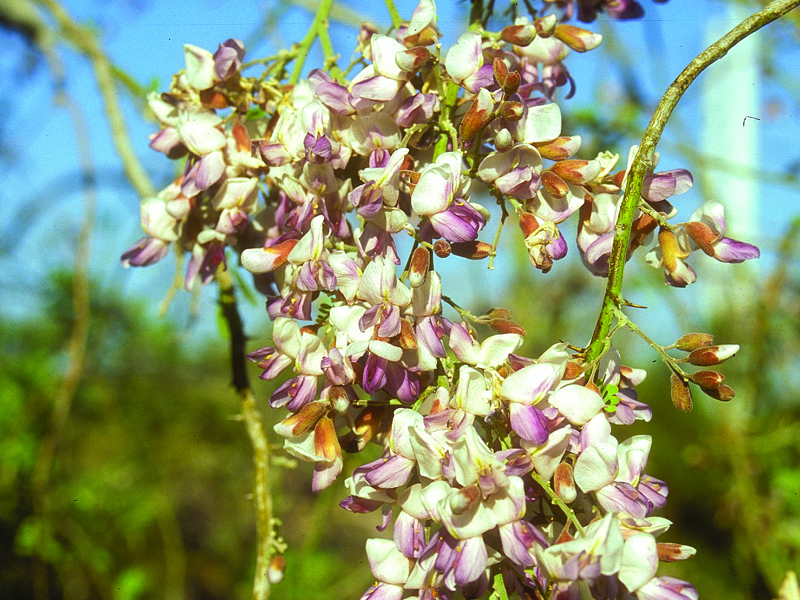Common fruit trees like citrus and figs are forming fruits in May but there are many other desert plants producing edible fruits. These desert fruits produced are relished by desert animals such as birds, desert tortoises as well as people.
Look for saguaro fruits beginning to form. Oval-shaped red fruits will ripen in June and July. Sweet and delicious, these juicy fruits have thousands of seeds imparting a nutty flavor. The amount of fruit produced by the saguaro depends on the environmental conditions with some years being more favorable than other years.
Lycium spp. commonly called wolfberries are found throughout the desert Southwest. These thorny shrubs flower in spring, delicate lilac to purple blossoms. Red to orange, oval-shaped fruits begin to form in May providing a food source for many desert animals. According to Wendy Hodgson in the “Food Plants of the Sonoran Desert” when fruits are eaten in abundance can cause a temporary blackening of the teeth.
Many desert trees begin to form pods or fruits including mesquites, ironwoods and palo verdes. The fruit of these trees can either be eaten when ripe or fresh depending on the species. A commonly used landscape tree, and long been used for firewood, mesquite pods are harvested when they turn a golden brown. They can be ground into a meal or flour and gluten free.
The palo verde tree fruits can be ground just like the mesquite tree, but the pods were also consumed fresh, tasting like green beans. The preferred fruit comes from Parkinsonia microphylla, having a much sweeter taste.
The ironwood fruit begins to ripen in late May and June. The seeds are roasted and said to taste like peanut butter.
With any edible, native plant before tasting, it is a good idea to research and properly identify. Many desert plants if not careful can cause digestive issues.
Before harvesting fruit other than your own landscape, you must seek permission from landowners. Many of the plants are protected by Arizona plant laws, click here for more information.


